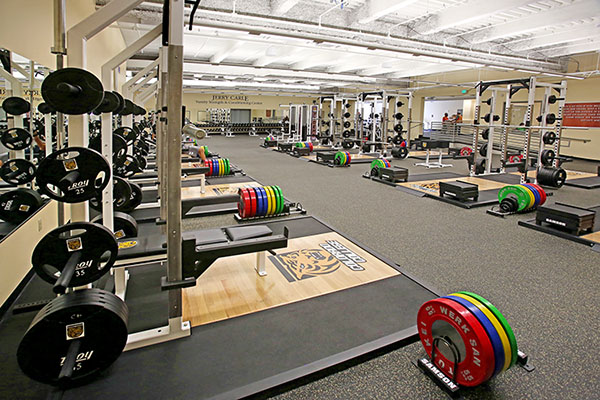Nov 13, 2019Building a Foundation: Strength training for youth athletes
Most sport coaches understand the importance of strength training and the role it plays in making athletes bigger, faster, stronger and more injury resistant. But many are unsure what to do once they get the team in the weight room. This problem is compounded when dealing with athletes with very low “training ages” (experience weight training) that may never have even entered a strength facility before.
 Here are a few things that sport coaches dealing with younger or untrained populations can address early in an athlete’s development that will build a foundation for continued success in the weight room and on the field of play.
Here are a few things that sport coaches dealing with younger or untrained populations can address early in an athlete’s development that will build a foundation for continued success in the weight room and on the field of play.
Flexibility
Unfortunately, most young athletes have limited flexibility and range of motion. There are many factors that contribute to this, such as poor posture, too much time sitting and early specialization. The earlier you address this, the better your athletes will respond to all other aspects of training.
Start each session with a general warmup to increase heart rate, respiration rate and core body temperature. Then address the flexibility of all joints and muscle groups. This doesn’t have to be overly complicated. Staple movements like leg swings, bodyweight squats, lunges, and mountain climber stretches are great for beginners and you can make the stretches and movements more complex as they increase their proficiency in the basics.
Body weight control
It’s shocking how many kids we deem “good athletes” that can’t properly do a pushup, pullup or bodyweight squat. The earlier you address these basic movements, the sooner they can make a smooth transition to effectively using implements like barbells, dumbbells and kettlebells.
» ALSO SEE: Emphasizing safety in the weight room
“Classic” or “old school” exercises like pushups and pullups, and the progression to proper technique, are critical to helping young athletes build proficiency at weight training. For example, if somebody is struggling with pullups, a progression of inverted rows, assisted/banded pullups, spotted pullups, and then actual pullups will not only increase posterior chain strength, but will set the foundation for more complicated back exercises to be learned later and instill a sense of pride about their efficacy in the weight room.
Foundation movements
If the athlete can reasonably control their bodyweight, it’s time to start introducing movements that will be the foundation of your program. Picking one lower body push, one lower body pull, one upper body push, and one upper body pull — and making sure your players are great at those before introducing anything else — creates a strong foundation for both the athletes and your program. I have found that the back squat, Romanian dead lift (RDL), barbell bench press, and pullups are good starting places for collegiate athletes, but depending on the actual age and training age of your team, adjustments may need to be made.
Core stability
Lack of core stability is an issue for most young people. This weakness prevents them from achieving their full potential in resistance training and in sports. Addressing core stability with a mixture of flexion (sit-ups, crunches), extension (super-mans, hyperextensions), bracing (planks, holds), and leg dominant movements (leg raises, hanging knee raises) during every session will help young athletes develop the foundation for successful weight training.
Important rules
When working with young athletes, coaches should establish some absolutes and never deviate from them. Teaching young people these training principles will impact their life after they’ve left your program or competitive sports. Below are a few I think are valuable.
- Safety first. Principles like using collars on bars, having a spotter for any potentially dangerous movement, wearing proper attire/footwear, and never sacrificing technique for more weight on the bar are ideas everyone should acknowledge.
- Without effort, there are no results. There has never been more information available about how to train or more specialized equipment available to train effectively, but none of this will matter without the effort of the person training. You don’t need thousands of dollars’ worth of wearable technology or the most scientifically engineered treadmill to put effort in at the gym and see results.
- Quality over quantity. Five good reps are better than 50 bad reps. In addition, sacrificing technique for bragging rights or to over inflate an ego is a recipe for disaster.
- Your biggest competition is yourself. Sports are about competition and we love competitive athletes, but this can get dangerous in the weight room. There are dozens of reasons why one athlete is stronger than another (body type, muscle fiber proportion, limb length, training age). While we should foster healthy competition under some circumstances, as coaches we should focus more time and energy on making our players better than they were yesterday.



